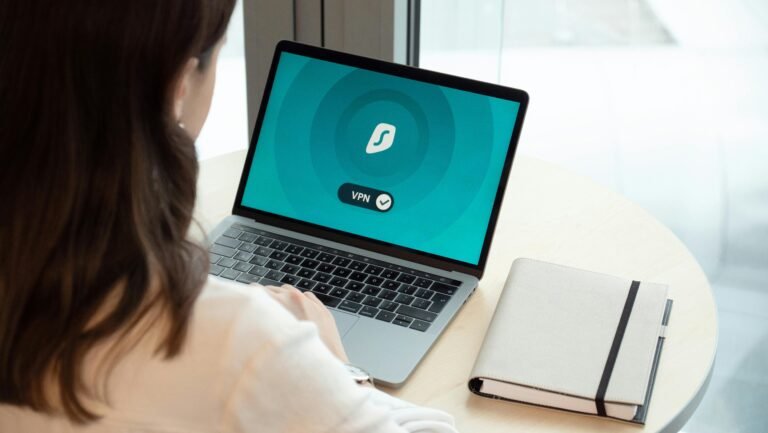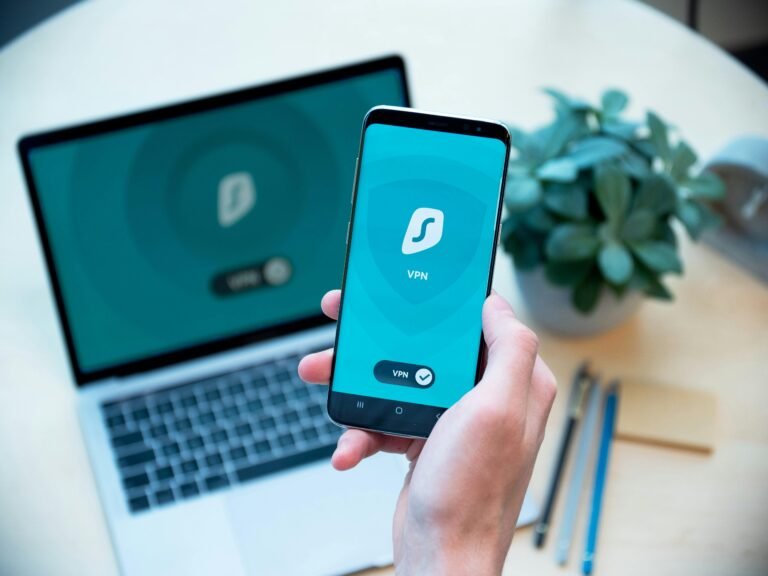Safeguard Your Privacy While Shopping Online
More than 79% of adults in the U.S. shop online each year. With online shopping growing, keeping privacy while shopping online is key. Knowing the risks and how to stay safe is crucial.
About 35% of shoppers worry about fraud online. This shows how important it is to follow safety tips. By doing so, you can lower your risk of fraud.
As you shop online, it’s vital to know the latest safety tips. Using strong passwords and checking websites are good steps. These actions help keep your info safe.
By being careful and informed, you can shop online safely. This article will guide you on how to protect yourself. We’ll share tips and practices for safe online shopping.
Key Takeaways
- Approximately 79% of adults in the U.S. have shopped online in the past year
- 35% of consumers have reported concerns about fraud when shopping online
- 54% of online shoppers are willing to abandon their cart if they do not see HTTPS security indicators on a website
- 62% of online consumers prefer using credit cards over other payment methods for enhanced security
- 70% of all online breaches occur due to inadequate website security and lack of HTTPS encryption
- 85% of consumers prefer shopping on websites with HTTPS, as it indicates a secure connection
Understanding the Risks of Online Shopping
When you shop online, it’s key to know the risks. Safe online shopping habits can shield you from fraud and theft. Identity theft is a big risk, happening when hackers get into e-commerce sites or fake stores. These places sell fake goods cheaply, trying to get your personal and financial info.
Another danger is unencrypted data. Hackers can get this when sites don’t have SSL. Only sites with HTTPS are safe. Digital security for online shopping is vital to avoid these dangers. You can stay safe by being careful with your personal and financial info online.
Signs of fake websites include missing SSL, no privacy policies, weird prices, no contact info, and poor site quality. Good online stores use credit cards, which help fight fraud better than other ways. Knowing these risks and being careful can make your online shopping safe and secure.
| Risk | Description |
|---|---|
| Identity Theft | Theft of personal and financial information through hacking or fake online stores |
| Unencrypted Data | Access to personal and financial information due to lack of SSL certification |
| Fraudulent Websites | Websites with missing SSL certificates, lack of privacy policies, or suspicious pricing |
Essential Steps for Protecting Yourself When Using Online Shopping Platforms
To keep your info safe online, start by making your computer secure. Install anti-virus software and a firewall. Also, update your browser and use strong passwords for all accounts. This helps protect your info and lowers fraud risk.
For safe payments, think about using credit cards or PayPal. They have extra security and limits on losses. For example, you’re only liable for up to $50 for unauthorized charges. Using these methods can also help you avoid fraud losses.
Here are some tips to keep in mind:
- Use strong and unique passwords for all your online accounts
- Avoid using public Wi-Fi or public computers for online shopping
- Keep your browser and operating system up to date
- Use a reputable anti-virus software to protect your computer
By following these steps and using secure payment methods, you can keep your info safe. Always be careful when shopping online and check your financial statements often.
The Better Business Bureau says 60% of shoppers have seen online scams during holidays. To stay safe, use secure payment methods and protect your info. These steps will help you have a safe online shopping experience.
| Secure Payment Methods | Liability Limit |
|---|---|
| Credit Cards | $50 |
| PayPal | Varies |
Creating Strong Passwords for Shopping Accounts
To keep your online shopping safe, make strong passwords. Use letters, numbers, and symbols. This makes your passwords hard to guess.
Use password management software. It helps store your passwords. It also adds two-factor authentication for more security.
A good password is at least 12 characters long. Try to make it 14 or more. Mix uppercase and lowercase letters, numbers, and symbols.
Don’t use the same password for all accounts. This can lead to trouble. About 70% of people use the same password everywhere.
- Using a password manager to generate and store unique passwords
- Enabling two-factor authentication to add an extra layer of security
- Avoiding the use of personal information, such as names and birthdays, in passwords
- Creating passwords that are randomly generated and unpredictable
Follow these tips to keep your shopping accounts safe. This way, you can avoid fraud and theft.
Secure Payment Methods for Online Purchases
When you shop online, it’s key to use safe payment ways. Secure online shopping practices help keep your money safe from fraud. Using a credit card or apps like Apple Pay or Google Pay is safer than debit cards.
Think about using a virtual credit card number or a single-use card. This adds extra safety to your safe online shopping habits. Studies show people who use safe payment methods are 50% less likely to get scammed.
Some top safe payment ways include:
- Credit cards with zero-liability policies
- Mobile payment apps like Apple Pay or Google Pay
- Virtual credit card numbers or single-use credit card numbers

By following secure online shopping practices and safe online shopping habits, you can shop online safely. Always look for “HTTPS” in a website’s URL. And be careful of any online stores that seem off.
| Payment Method | Security Features |
|---|---|
| Credit Cards | Zero-liability policies, EMV chip-enabled |
| Mobile Payment Apps | Tokenization, biometric authentication |
| Virtual Credit Card Numbers | Single-use, limited authorization |
Recognizing Legitimate Shopping Websites
When protecting yourself when using online shopping platforms, it’s key to know real shopping sites. Look for the “lock” icon in your browser’s status bar. Also, make sure the website’s address starts with “https”. This means the site has a security certificate, like SSL or TLS, to keep your info safe.
To check if a site is real, look for online shopping safety tips like clear contact info. This includes a physical address and a special email for the site. A site that looks professional and doesn’t have many mistakes is likely real. But, watch out for sites with lots of bad reviews on Google My Business and Yelp. They might be scams or not very reliable.
- Check for trust seals, like TrustedSite, which show a site is safe.
- Look for sites with clear product info, prices, and how you’ll pay.
- Be careful of sites that want your social security number or bank info.
| Legitimate Website Characteristics | Description |
|---|---|
| Valid security certificate | Shows the site is secure and keeps your info safe. |
| Clear contact information | Has a real address and a special email, showing it’s trustworthy. |
| Professional appearance | No big mistakes in spelling or grammar, meaning it’s a good site. |
Privacy Settings and Digital Footprints
When you shop online, it’s key to watch your digital trail. Make sure to protect personal information online shopping. Be careful with your personal info and use privacy settings wisely. Think about using a VPN to keep your internet safe. Also, don’t shop online on public Wi-Fi or computers.
A study showed most online stores track your data a lot. This shows how important it is to keep your digital trail safe. Here are some ways to do that:
- Use privacy settings to limit the amount of data shared
- Avoid using public Wi-Fi or public computers for online shopping
- Consider using a VPN to encrypt your internet traffic
- Be cautious when providing personal information online
By doing these things, you can protect personal information online shopping better. Always be careful with your digital trail and manage it well.
| Tip | Description |
|---|---|
| Use strong passwords | Use unique and complex passwords for each account |
| Enable two-factor authentication | Add an extra layer of security to your accounts |
| Monitor your accounts | Regularly check your accounts for suspicious activity |
Safe Wi-Fi Usage While Shopping Online
When you shop online, it’s key to use a safe internet connection. This is very important when using public Wi-Fi. Public Wi-Fi can be risky for your online safety. To stay safe, know the risks of public Wi-Fi and how to avoid them.
Public Wi-Fi can let hackers see your online activity. This can lead to stolen identity and lost money. To stay safe, use a virtual private network (VPN). A VPN makes your internet use private and safe, even on public Wi-Fi.
Public Wi-Fi Risks
Using public Wi-Fi for shopping can be risky. Here are some dangers:
- Interception of sensitive information, such as credit card numbers and passwords
- Malware and virus attacks
- Identity theft and financial loss
VPN Implementation for Shopping
To shop online safely, think about using a VPN. A VPN makes your internet use safe and private, even on public Wi-Fi. It helps protect you from identity theft and financial loss.
By being careful and using a VPN, you can shop online safely. Always choose safe online shopping habits and use a secure internet connection. This keeps your personal and financial info safe.
| Online Shopping Risks | Prevention Methods |
|---|---|
| Interception of sensitive information | Use a VPN to encrypt internet traffic |
| Malware and virus attacks | Use antivirus software and keep it up to date |
| Identity theft and financial loss | Use strong passwords and keep them confidential |
Monitoring Your Financial Statements
When you shop online, watch your money closely. This is key to avoid fraud and theft. It’s a top safety tip for online shopping. By checking your accounts often, you can spot and stop bad transactions fast.
Setting up purchase alerts is a smart move. It tells you right away if something looks off. Also, keep your digital receipts. This helps you track your spending and spot any problems.

Also, make your financial info safe. Use strong passwords and update your software. This keeps you safe from cyber threats and identity theft. Follow these tips for a safe online shopping time.
Best Practices for Monitoring Your Financial Statements
- Regularly review your account activity to detect any suspicious transactions
- Set up purchase alerts to notify you of any unusual activity
- Track your digital receipts to keep a record of your online purchases
- Use strong passwords and keep your software up to date to protect yourself from cyber threats
Follow these tips to stay safe from financial fraud. Always keep your online shopping safe and protect your money.
Data Protection During Mobile Shopping
When you shop on your phone, it’s key to keep your info safe. Use a mobile payment app or a credit card. They are safer than debit cards because they have enhanced security features.
To keep your info safe online, here are some tips:
- Use a VPN to encrypt your internet traffic
- Avoid using public Wi-Fi or public computers for online shopping
- Keep your operating system and software up to date to prevent vulnerabilities
Choosing secure payment methods is very important. About 30% of online shoppers choose credit cards for their extra security. Also, using two-factor authentication can greatly lower the chance of someone getting into your account without permission.
By following these steps, you can protect your personal and financial info when shopping on your phone. Always be careful and take steps to keep your info safe, especially during times like tax season.
| Security Measure | Effectiveness |
|---|---|
| Using a VPN | High |
| Keeping software up to date | High |
| Using two-factor authentication | High |
What to Do If Your Information Is Compromised
When you shop online, you might face risks. It’s key to act fast if your info gets stolen. Knowing how to stay safe online can really help.
If you think your info is at risk, don’t panic. Take steps to keep your accounts safe from fraud and theft.
Telling the Federal Trade Commission and your state’s attorney general is a good first step. They can help you fix the problem and stop more trouble. Always follow their advice to lessen the harm.
Immediate Action Steps
First, change your passwords. Keep an eye on your money and set up alerts for big buys. Using different passwords for each site helps a lot. Two-factor authentication stops most hackers.
Reporting Fraud
Telling about fraud is very important. In 2021, 1.4 million identity theft cases were reported. Reporting fraud helps stop more problems and keeps your info safe.
Recovery Procedures
Recovering from a breach might mean freezing your credit. This stops new accounts from being made. Only 15% of people do this, but it’s very effective. By following these tips, you can keep your info safe and avoid more trouble.
Embracing Secure Online Shopping Habits
As the digital world grows, it’s key to always shop online safely. Follow the tips in this article for a secure shopping experience. Use strong passwords and safe payment methods to protect your info.
Being careful and proactive is crucial for safe online shopping. By making smart choices and staying current with online privacy, you can shop confidently. Your safety online is very important. With the right steps, you can shop easily and feel safe.








